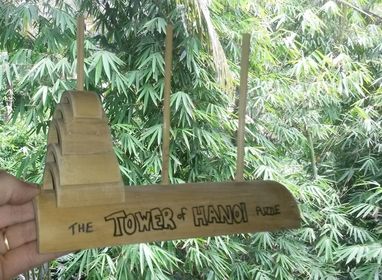Encouraging Inquiry
Maths is all around us every day. It is hidden in the shape and patterns of nature, in the beauty of art, in design, in architecture, in technology.
Mathematics is the language of science, it can help us to better understand the world in which we live. Open your eyes to the beauty of mathematics and you will start to see it everywhere.
Can you find the mathematics hidden in each of these images?
What would you like to know more about? What ideas does this video inspire? What projects could we explore in class?
Share your questions or suggestions via the Wonder Wall in class and lets have some fun using maths to discover our world.
Mathematics is the language of science, it can help us to better understand the world in which we live. Open your eyes to the beauty of mathematics and you will start to see it everywhere.
Can you find the mathematics hidden in each of these images?
What would you like to know more about? What ideas does this video inspire? What projects could we explore in class?
Share your questions or suggestions via the Wonder Wall in class and lets have some fun using maths to discover our world.
Micro Maths Investigations
Term Three
To celebrate our love of games and puzzles in Grade 4, our Term Three Maths Investigation focus is called The Great Puzzle Project. We will be designing and making our very own set of bamboo and paper puzzles to combine our mathematical thinking skills with our love of play.
We will be drawing inspiration from some world famous, and some slightly more unknown, sources to build our own collection of hands-on challenges for personal use and to share with family and friends. It's going to be great fun!
To introduce the unit, we ended last term by exploring the 'ancient' Tower of Hanoi puzzle. The mythical story behind the puzzle, goes a little like this:
Far away in a long-lost Hindu temple, high on a mountain, monks of unknown origin have been practising an unusual ritual, since the beginning of time. Within the temple are three tall, slender spindles, and on the first of those spindles 64 golden disks were stacked with each disk slightly smaller than the one below it. The priests were challenged by the gods to transfer the 64 golden disks from the first spindle to the third by following two sacred rules: the disks are so precious that only one disk may be moved at a time, and a larger disk can never be placed on top of a smaller one.
Since the creation of the universe, the priests have worked patiently on their task, day and night, in the knowledge that when their work is finally finished their temple will crumble into dust and the whole earth will cease to exist.
Curious? Try the puzzle for yourself using the online version below.
We will be drawing inspiration from some world famous, and some slightly more unknown, sources to build our own collection of hands-on challenges for personal use and to share with family and friends. It's going to be great fun!
To introduce the unit, we ended last term by exploring the 'ancient' Tower of Hanoi puzzle. The mythical story behind the puzzle, goes a little like this:
Far away in a long-lost Hindu temple, high on a mountain, monks of unknown origin have been practising an unusual ritual, since the beginning of time. Within the temple are three tall, slender spindles, and on the first of those spindles 64 golden disks were stacked with each disk slightly smaller than the one below it. The priests were challenged by the gods to transfer the 64 golden disks from the first spindle to the third by following two sacred rules: the disks are so precious that only one disk may be moved at a time, and a larger disk can never be placed on top of a smaller one.
Since the creation of the universe, the priests have worked patiently on their task, day and night, in the knowledge that when their work is finally finished their temple will crumble into dust and the whole earth will cease to exist.
Curious? Try the puzzle for yourself using the online version below.
|
Our very own bamboo Tower puzzle.
|
Term One
In our Micro-Maths Investigations in Term One we explored modern pen and paper games of logic.
The aim was to build a classroom culture of sportsmanship and playful engagement, develop our logic skills, encourage invention and to have a little fun along the way.
Games we explored include:
Noughts and Crosses - During our investigation we asked:
Can we develop a winning strategy? What would happen if we changed the rules? What if the person who formed a row of three was the loser? What if the grid was made up of 4 rows of 4? What would happen if you could place two pieces on any given turn? Does it matter who goes first?
Dots and Boxes - We investigated:
Can you determine a winning strategy? Which grid sizes are best? Does it make a difference if your playing grid is square or rectangular? Can carefully considered sacrifices (giving away a square on purpose) be part of a winning strategy?
Connect Four - During our investigation we asked:
Where should you place your first piece to get off to the best start? How could we record our games to look for winning strategies? Do winning games have anything in common? What are the best techniques for forming two-way traps?
The aim was to build a classroom culture of sportsmanship and playful engagement, develop our logic skills, encourage invention and to have a little fun along the way.
Games we explored include:
Noughts and Crosses - During our investigation we asked:
Can we develop a winning strategy? What would happen if we changed the rules? What if the person who formed a row of three was the loser? What if the grid was made up of 4 rows of 4? What would happen if you could place two pieces on any given turn? Does it matter who goes first?
Dots and Boxes - We investigated:
Can you determine a winning strategy? Which grid sizes are best? Does it make a difference if your playing grid is square or rectangular? Can carefully considered sacrifices (giving away a square on purpose) be part of a winning strategy?
Connect Four - During our investigation we asked:
Where should you place your first piece to get off to the best start? How could we record our games to look for winning strategies? Do winning games have anything in common? What are the best techniques for forming two-way traps?


